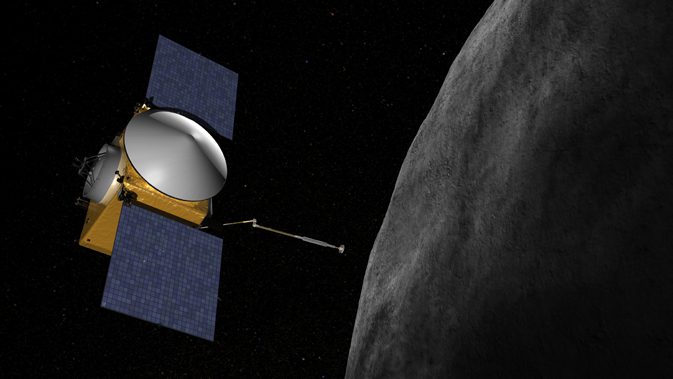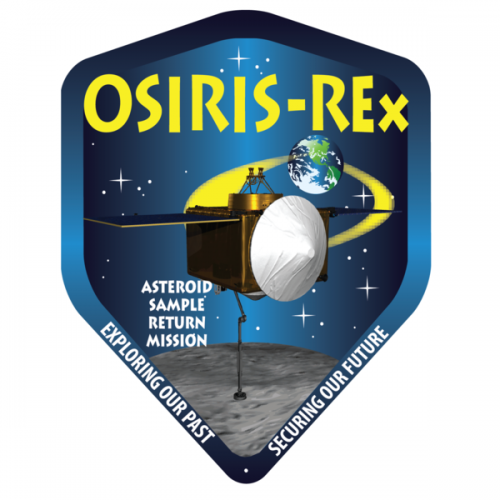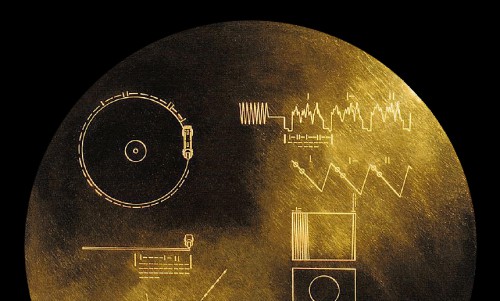
With two years still to go before its planned launch, the Origins-Spectral Interpretation-Resource Identification-Security-Regolith Explorer (OSIRIS-REx) mission has been granted another mission: to carry short social media messages and images from people on Earth in a time capsule to the far-off asteroid Bennu. Yesterday (Tuesday, 2 September), NASA invited the world’s public to submit their thoughts about Solar System exploration in 2014 and predictions of our possible exploration activities in 2023, when OSIRIS-REx is scheduled to return samples of Bennu back to Earth. Over the next four weeks, the mission team will select 50 images and 50 tweets to be placed aboard the time capsule.
The $800 million OSIRIS-REx mission—which, even by NASA’s standards, boasts an impressive and meaty acronym—was selected in May 2011 as the third “New Frontiers” exploration program, after the Pluto-bound New Horizons and the Jupiter-headed Juno spacecraft. It will fly atop an Atlas V rocket from Space Launch Complex (SLC)-41 at Cape Canaveral Air Force Station, Fla., in September 2016. More than two years later, in 2019, it will enter orbit around Bennu and spend the next 505 days mapping the asteroid’s surface from a distance of about 3 miles (5 km). This will enable investigators to zero-in on a possible surface sampling location, and the spacecraft will approach the 1,760-foot-diameter (500-meter) asteroid, extend its robotic arm, and make up to three attempts to retrieve a specimen of between 2 ounces (60 g) and 4.4 pounds (2 kg).
And this robotic arm, or at least its shape, was what inspired nine-year-old Michael Puzio to suggest the name “Bennu” for humanity’s next asteroid target. OSIRIS-REx is equipped with wing-like solar arrays and the Touch-and-Go Acquisition Mechanism (TAGSAM), which struck Puzio as not dissimilar to the mythical Egyptian Bennu bird. In 2012, The Planetary Society, the University of Arizona, and the Lincoln Laboratory at Massachusetts Institute of Technology (MIT) called on students from around the world to submit suggestions to name the asteroid, which was discovered in September 1999 and initially assigned the cumbersome nomenclature of (101955) 1999 RQ36. More than 8,000 students from 25 nations sent in their ideas, with Puzio named the winner in April 2013.

Several weeks later, OSIRIS-REx passed a major confirmation review—known as Key Decision Point (KDP)-C—in which an executable plan to return samples from Bennu was finalized, ahead of the challenge of actually implementing that plan. More recently, in April 2014, it was announced that the mission had concluded its Critical Design Review (CDR), signaling the transition from the design to the hardware fabrication stage.
Although OSIRIS-REx will not be the first machine built by human hands to sample an asteroid, it certainly promises to return the largest haul of asteroid material to Earth. In May 2003, the Japan Aerospace Exploration Agency (JAXA) launched its Hayabusa (“Falcon”) mission to rendezvous with Asteroid 25143 Itokawa. Powered by xenon ion thrusters, the spacecraft reached its quarry in September 2005 and collected about 1,500 microscopic grains of asteroidal material—acquired by means of “spray” kicked up from a number of fired projectiles—before returning successfully to Earth in June 2010.
Unlike Hayabusa, OSIRIS-REx will remain in orbit around its asteroid for about 17 months, acquiring map-quality imagery and compositional data. It will begin its journey back to Earth in May 2021, for a scheduled parachute landing at the Utah Test and Training Range in 2023.
And it is for this reason that yesterday’s invitation by NASA for the public to submit their social media messages about the possible exploration events of the coming decade originated. According to the space agency, messages can be submitted until 30 September 2014, and Danta Lauretta, the OSIRIS-REx principal investigator at the University of Arizona at Tucson, is keen to learn what advances our species may make. “Our progress in space exploration has been nothing short of amazing,” said Lauretta. “I look forward to the public taking their best guess at what the next ten years holds and then comparing their predictions with actual missions in development in 2023.” When the OSIRIS-REx sample return capsule comes back to Earth in 2023, it will be opened and investigators will be able to view the messages and images, with selected submissions posted online.

Sending messages inside cosmic bottles on various deep-space missions are nothing new. Gold-anodized aluminum plaques were carried aboard the Pioneer 10 and 11 missions, launched in March 1972 and April 1973, bearing pictorial messages of a man and a woman and symbols to describe the source of the two spacecraft. Later, gold-plated copper disks, bearing the “Sounds of Earth,” were launched aboard the two Voyagers in the summer of 1977. More recently, in January 2014, public participation was invited for the “Messages to Bennu” campaign, with space enthusiasts’ personal names—including this author—voluntarily submitted to be etched on a microchip aboard OSIRIS-REx.
In addition, space advocate and science journalist Jon Lomberg proposed the “One Earth Message,” to be uploaded to New Horizons, which is due to rendezvous with Pluto in July 2015. Lomberg worked with Carl Sagan on the development of the Voyagers’ golden records, and it is expected that data will be streamed to the spacecraft next year to form a “digital Voyager record 2.0.” To date, Lomberg has gathered in excess of 10,000 signatures from more than 140 nations for the initiative.
The Obama Administration’s policy for NASA is to attempt to visit and capture an asteroid and bring it into cislunar space for visitation by astronauts. The mission of OSIRIS-REx is expected to contribute enormously to the techniques and technologies needed to accomplish such a momentous feat. Since pristine, carbonaceous asteroids like Bennu are thought to represent conditions at the very dawn of our Solar System, the opportunity to deliver these primordial samples directly into the hands of scientists is expected to yield important clues about the origin and evolution of the Sun’s realm.
Want to keep up-to-date with all things space? Be sure to “Like” AmericaSpace on Facebook and follow us on Twitter: @AmericaSpace




really this is amazing to send names on mars iam really want to thank NASA team to make it possible for us to send our name